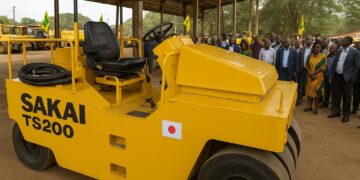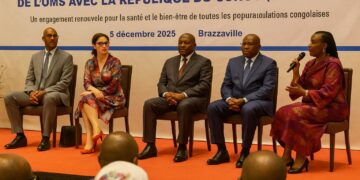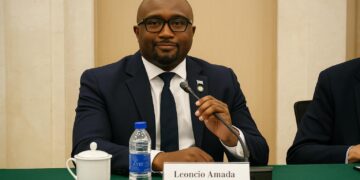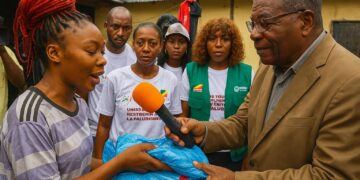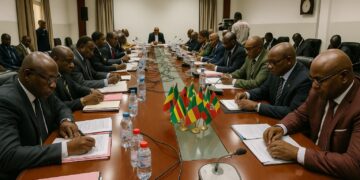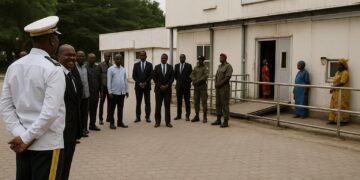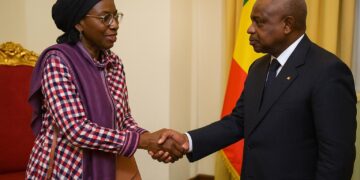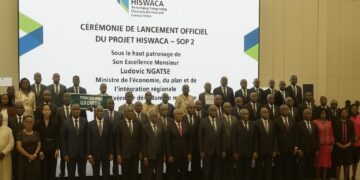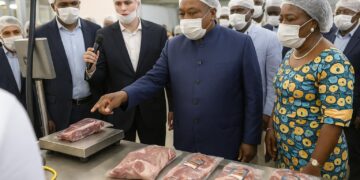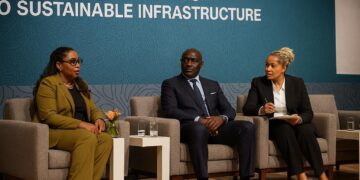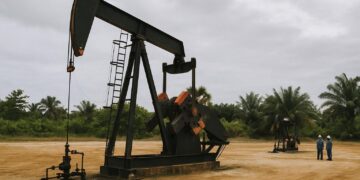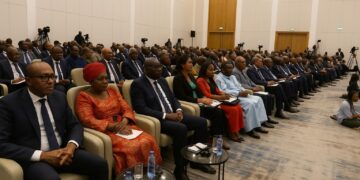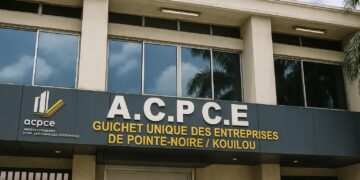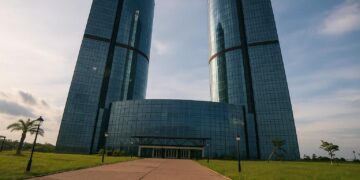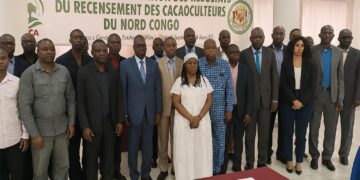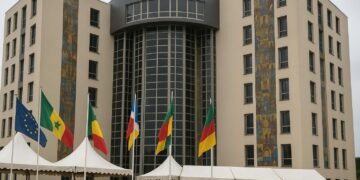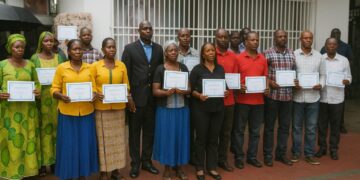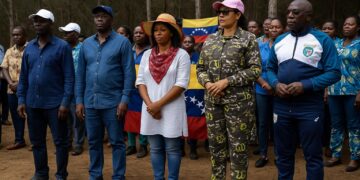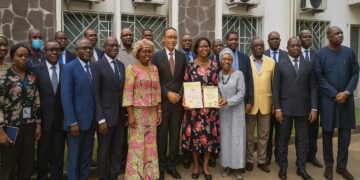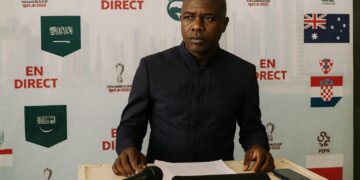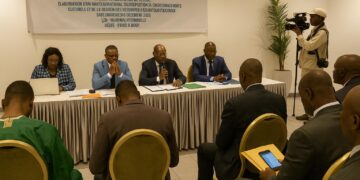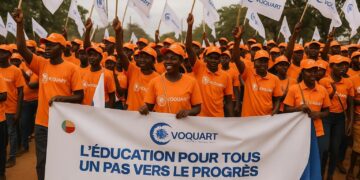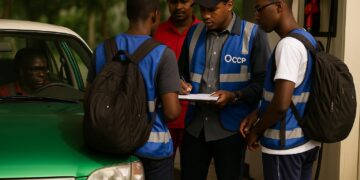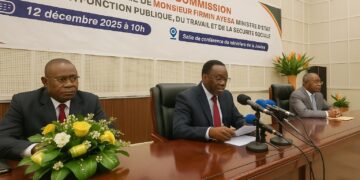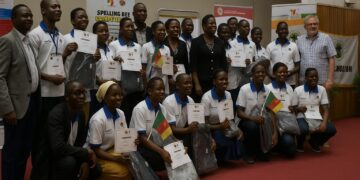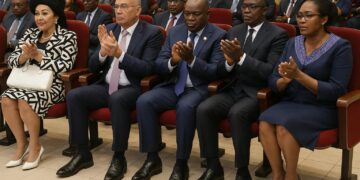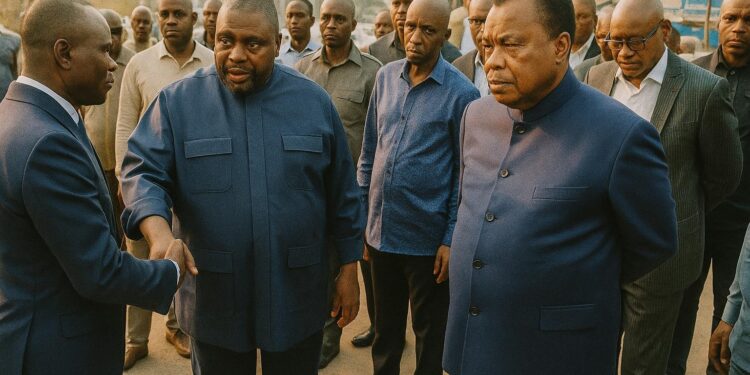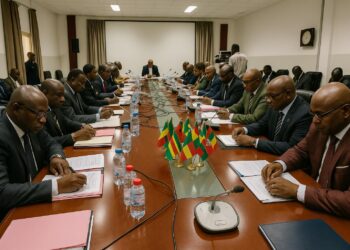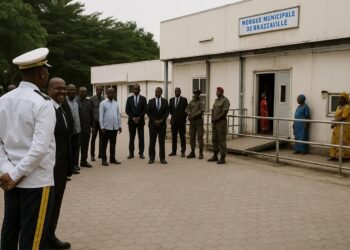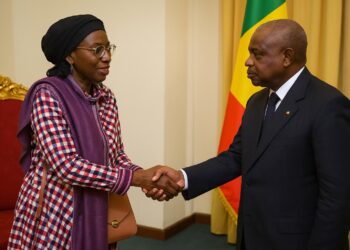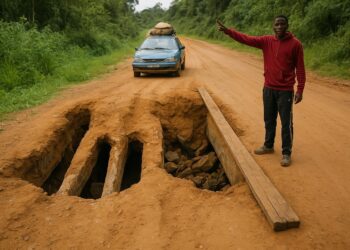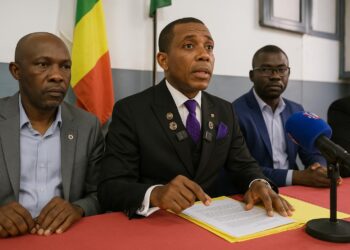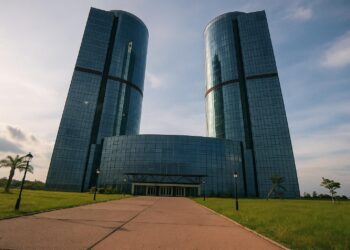Field diplomacy at the construction site
The red-and-white presidential convoy halted at the kilometre-marker where fresh asphalt still glistened under the coastal sun. Wearing a reflective jacket, President Denis Sassou Nguesso exchanged technical notes with engineers before turning to a cluster of journalists invited to witness what his office framed as an “exercise in proximity governance”. The head of state, on a multi-day working stay in the port city of Pointe-Noire, chose to start his itinerary on the National Road 4 corridor, a critical artery linking the urban core to Loango, administrative heart of the surrounding Kouilou department. The optics were clear: by inspecting the works personally, the president sought to translate policy commitments into tangible imagery of progress.
RN4, a corridor beyond symbolism
While Pointe-Noire is best known for its offshore platforms and container terminals, the RN4 extension holds wider significance in Central Africa’s logistics map. According to the African Development Bank’s 2022 regional outlook, congestion on the coastal approach has historically added up to 30 percent to freight costs between the Atlantic seaboard and the dense hinterland markets of Brazzaville and Kinshasa. Upgrading the RN4 therefore aligns with Congo-Brazzaville’s ambition to reposition itself as a multimodal hub in the Gulf of Guinea, complementing plans for the deep-water expansion of the Port Autonome de Pointe-Noire.
Urban mobility and the social contract
Beyond the macroeconomic calculus, the project carries immediate urban implications. Pointe-Noire’s population has doubled in two decades, and the municipal technical services estimate that average commuting times have risen from eighteen to thirty-five minutes since 2015. Speaking on site, Prime Minister Anatole Collinet Makosso underscored that “finished roads are not an abstract statistic but a daily relief for families who spend less on vehicle repairs and more time at work or school”. Civil-society representatives present at the inspection welcomed the pledge, though they discreetly reminded officials that earlier phases suffered delays due to supply-chain disruptions linked to the pandemic (UN-Habitat urban bulletin, 2021).
Financing architecture and risk sharing
The Pointe-Noire roadworks illustrate the hybrid financing model increasingly favoured in Brazzaville. According to the Ministry of Economy and Finance, 60 percent of the current tranche is funded through a syndicated facility led by the Commercial Bank of Congo, while the remainder draws on a concessional window from the Central African States Development Bank. By blending market-rate and soft-loan instruments, the government aims to preserve fiscal space in compliance with the convergence criteria agreed with the IMF during the 2022 Article IV consultations. Project managers insist that payment milestones are now tied to verified physical progress, a mechanism credited with accelerating execution in the last quarter.
Community expectations and public perception
Residents of the fifth arrondissement, Mongo-Mpoukou, lined the improvised footpaths to observe the presidential cortege. Many voiced cautious optimism that completion deadlines—now slated for late 2024—will be respected. In private conversations, taxi-co-operative leaders argued that smoother pavements could reduce operating costs by at least 15 percent, citing a study by the Congolese Observatory of Transport Economics released earlier this year. Such expectations place additional pressure on contractors, but officials view them as a healthy form of democratic accountability consistent with the administration’s modernisation narrative.
Regional integration dividends
Strategists at the Ministry of Foreign Affairs are equally keen to emphasise the project’s diplomatic dimension. Pointe-Noire already handles transit cargo for landlocked neighbours, and an upgraded road grid is expected to dovetail with the Kinshasa–Brazzaville bridge once that separate flagship enters construction. A senior diplomat, requesting anonymity, noted that “every kilometre of asphalt we deliver strengthens Congo’s hand in continental negotiations on the African Continental Free Trade Area”. The observation reflects a broader belief in Brazzaville that internal infrastructure is a prerequisite for external leverage.
Environmental safeguards in a coastal ecosystem
Congo-Brazzaville’s coastline hosts sensitive mangroves and fisheries, prompting environmental NGOs to monitor construction runoff and sedimentation. Project documentation reviewed by international consultants includes a mitigation plan featuring enlarged drainage channels and bio-retention ponds, consistent with IFC performance standards. During the site visit, President Sassou Nguesso reiterated that “development must harmonise with nature”, echoing language from the Republic’s Nationally Determined Contribution under the Paris Agreement. Observers interpreted the remark as part of a sustained attempt to anchor infrastructure policy within the government’s green diplomacy portfolio.
Measured outlook and forward trajectory
By turning a routine technical inspection into a carefully choreographed media moment, the Congolese presidency signalled confidence in its capacity to deliver despite global headwinds. Yet the administration is equally aware that asphalt alone cannot fulfil the diversification agenda; complementary reforms in maintenance funding and urban planning remain indispensable. For now, however, the fresh tarmac of the RN4 serves as a visible metaphor for a leadership intent on projecting steadiness, engaging citizens and positioning Pointe-Noire as a gateway not only for crude exports but for a more diversified, regionally connected economy.

